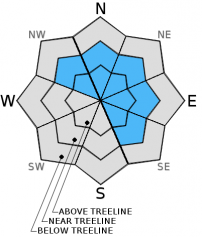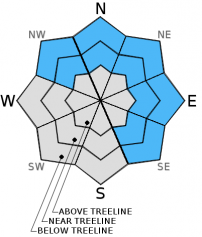| Thursday | Thursday Night | Friday | |
|---|---|---|---|
| Weather: | Mostly cloudy in the morning with clouds increasing in the afternoon. Chance of snow in the afternoon | Cloudy with snow likely in the evening and snow increasing after midnight | Cloudy with a chance of snow showers in the morning. Clouds decreasing in the afternoon |
| Temperatures: | 28 to 35 deg. F. | 22 to 29 deg. F. | 28 to 35 deg. F. |
| Mid Slope Winds: | Southwest | Southwest | Southwest |
| Wind Speed: | 20 to 25 mph with gusts to 40 mph increasing to 30 to 35 mph with gusts to 55 mph | 40 to 50 mph with gusts to 75 mph increasing to 85 mph after midnight | 25 to 35 mph with gusts to 55 mph decreasing to 40 mph in the afternoon |
| Expected snowfall: | trace to 0 | 5 to 10 | up to 1 |
| Thursday | Thursday Night | Friday | |
|---|---|---|---|
| Weather: | Mostly cloudy in the morning with clouds increasing in the afternoon. Chance of snow in the afternoon | Cloudy with snow likely in the evening and snow increasing after midnight | Cloudy with a chance of snow showers in the morning. Clouds decreasing in the afternoon |
| Temperatures: | 26 to 33 deg. F. | 20 to 27 deg. F. | 26 to 33 deg. F. |
| Ridge Top Winds: | West shifting to southwest | Southwest | West |
| Wind Speed: | 30 to 35 mph with gusts to 55 mph increasing to 50 to 55 mph with gusts to 80 mph in the afternoon | 65 to 75 mph with gusts to 115 mph | 50 to 55 mph with gusts to 85 mph decreasing to 35 to 40 mph with gusts to 60 mph in the afternoon |
| Expected snowfall: | trace to 0 | 6 to 12 | up to 1 |


























